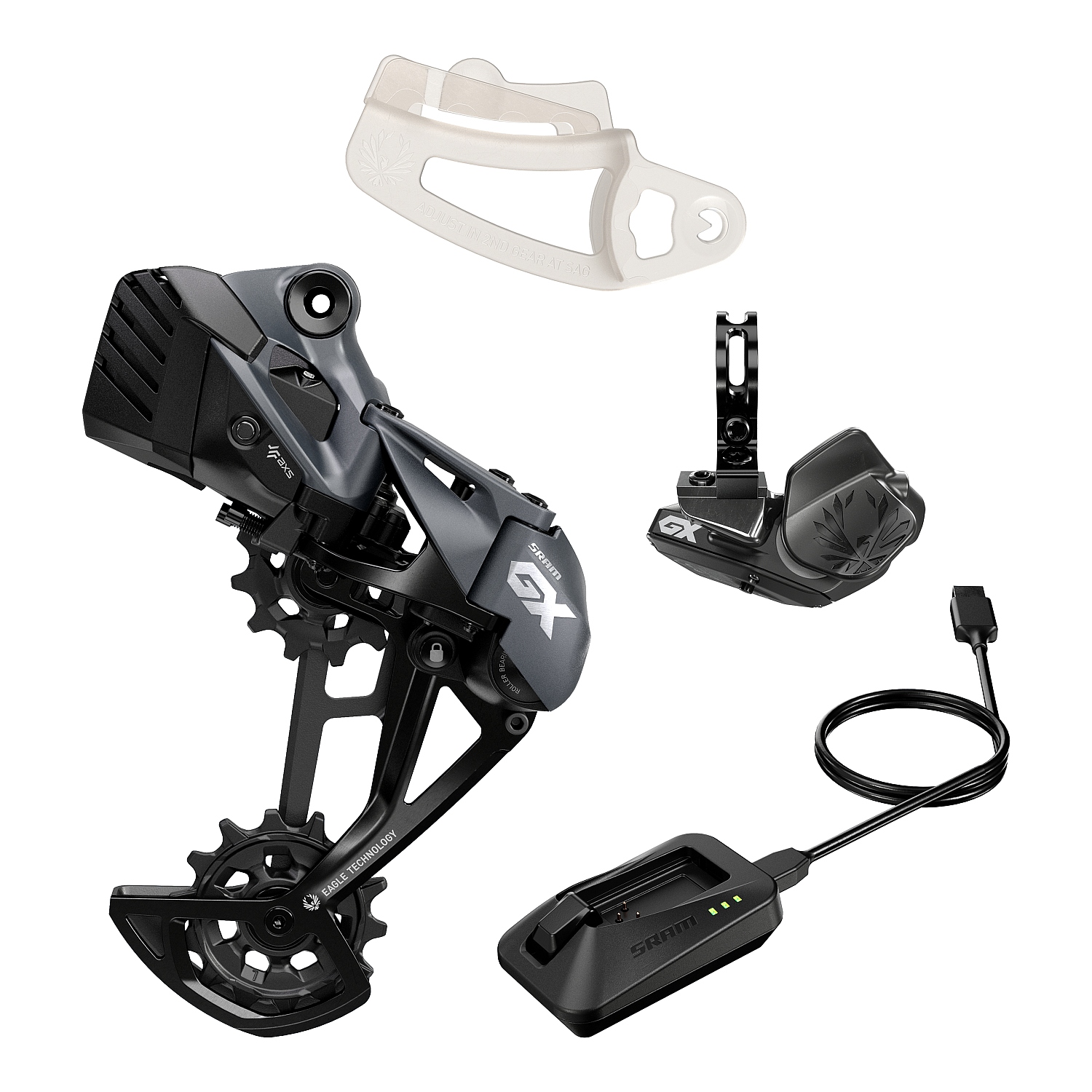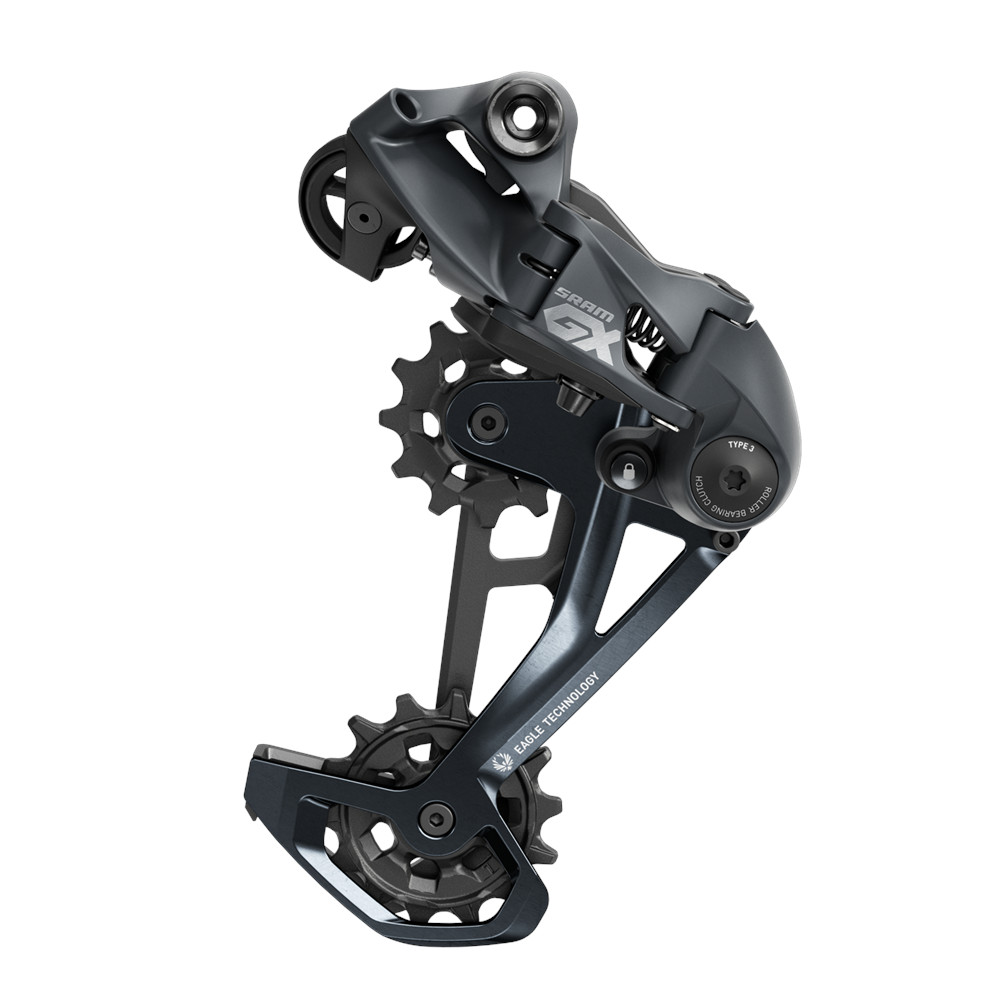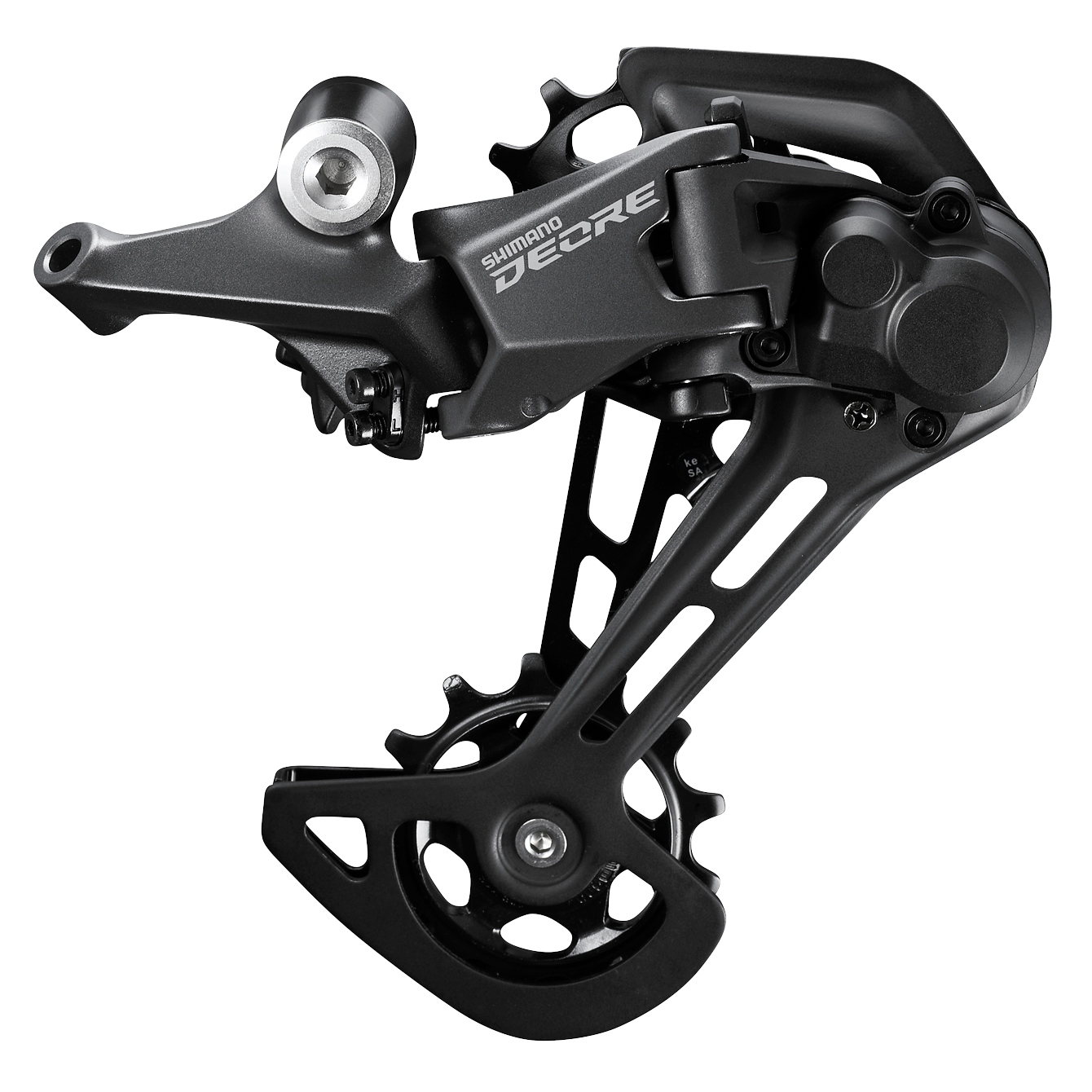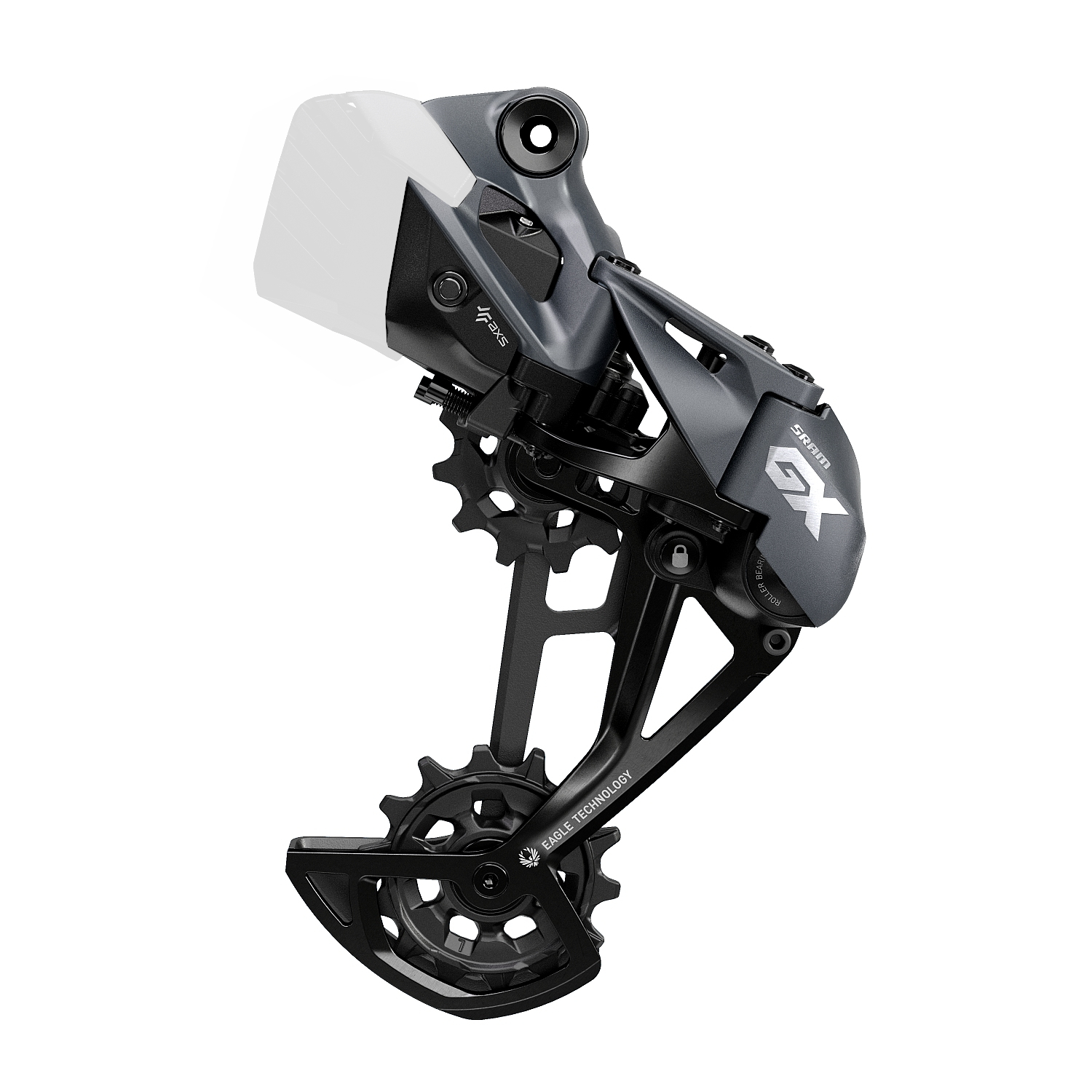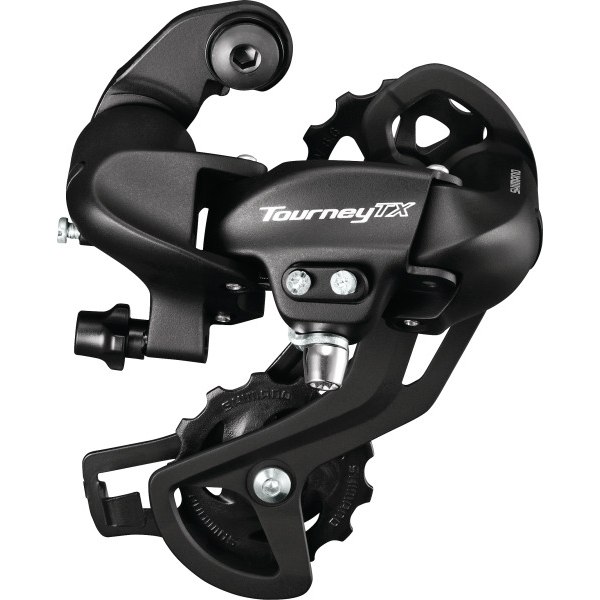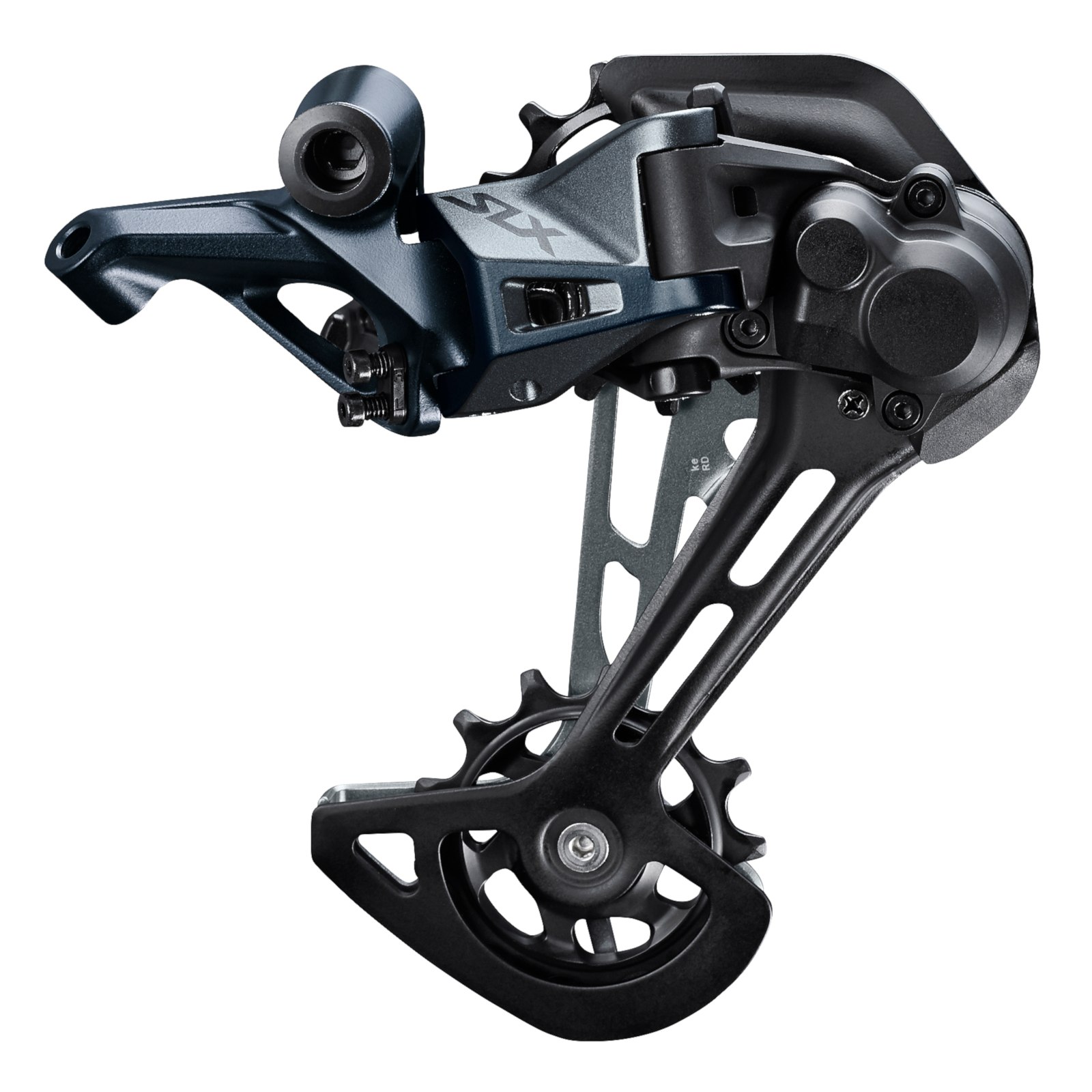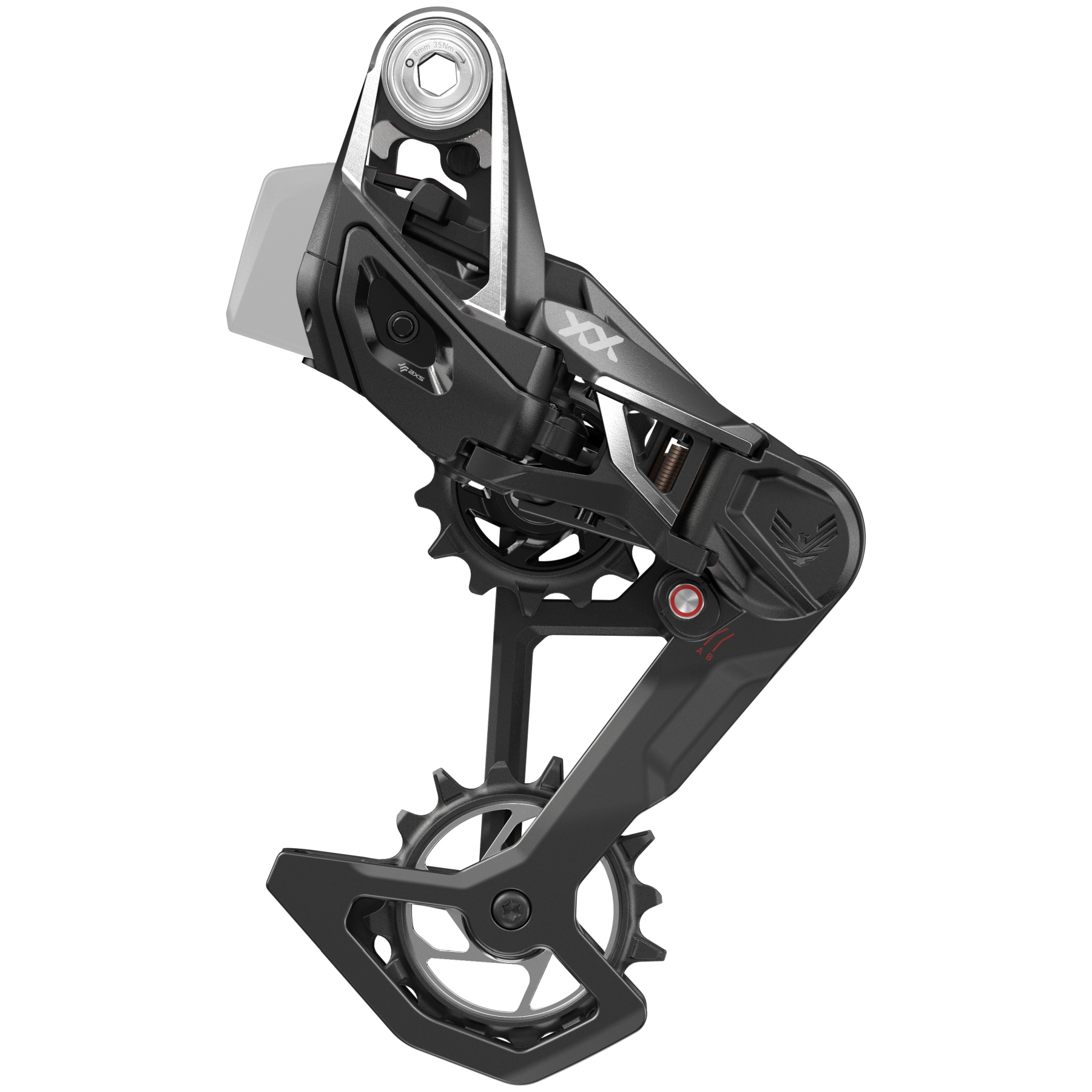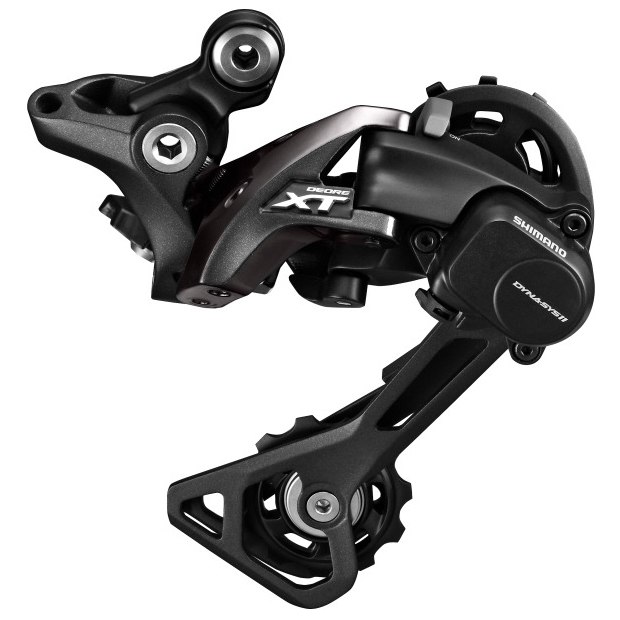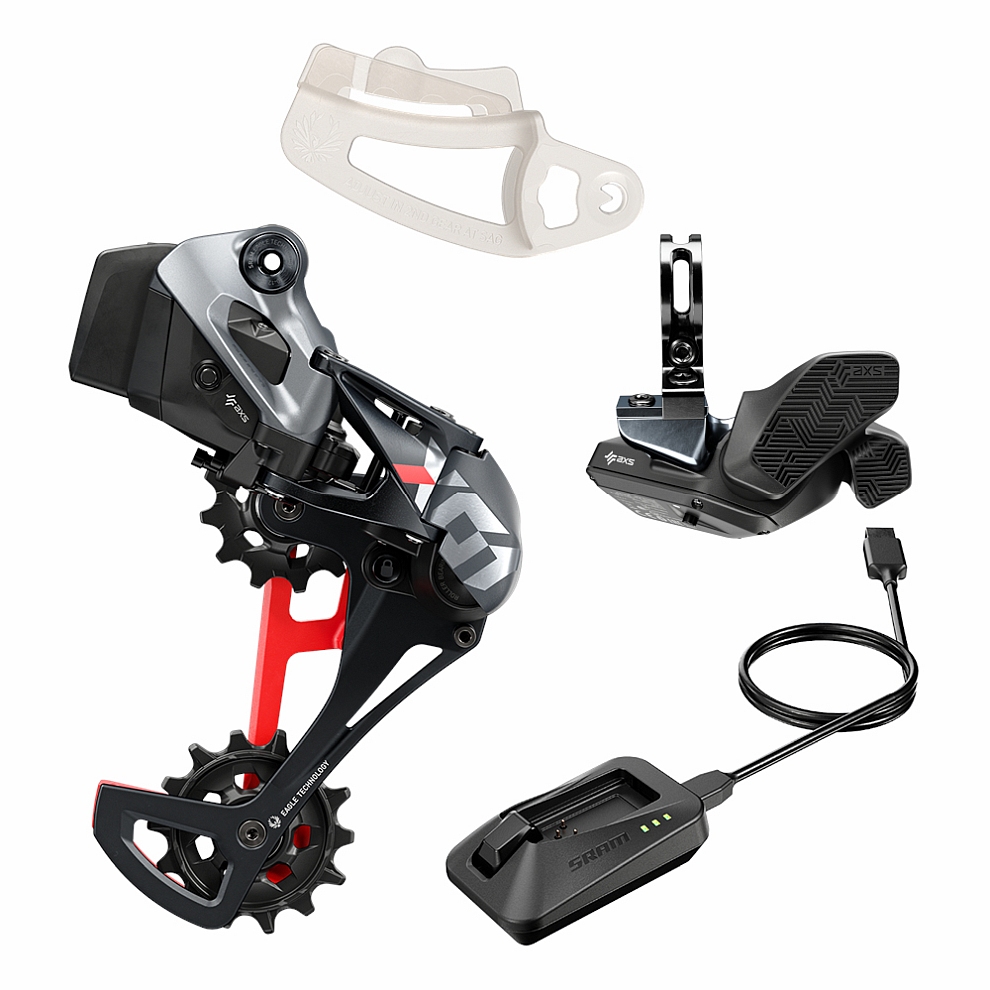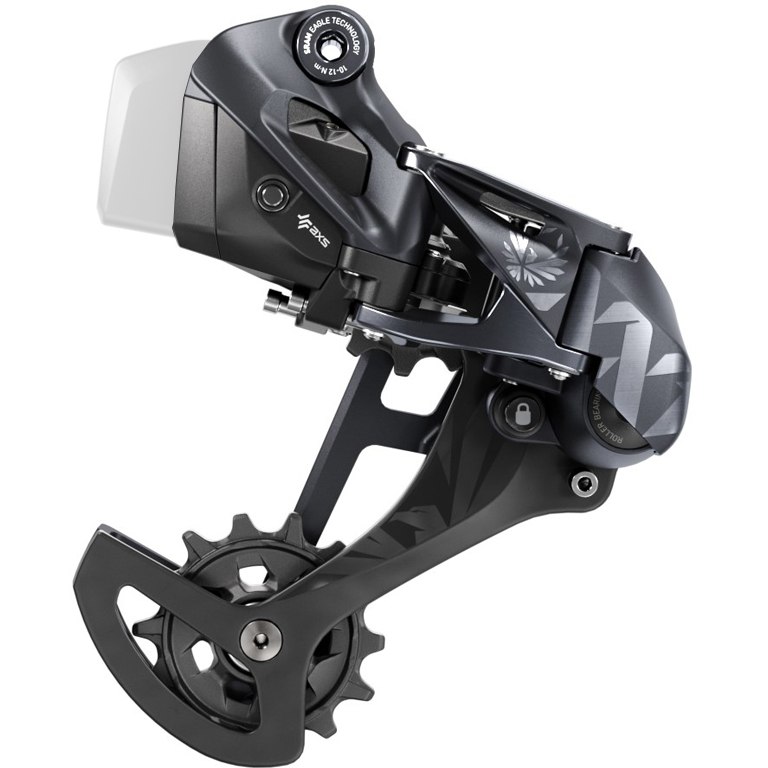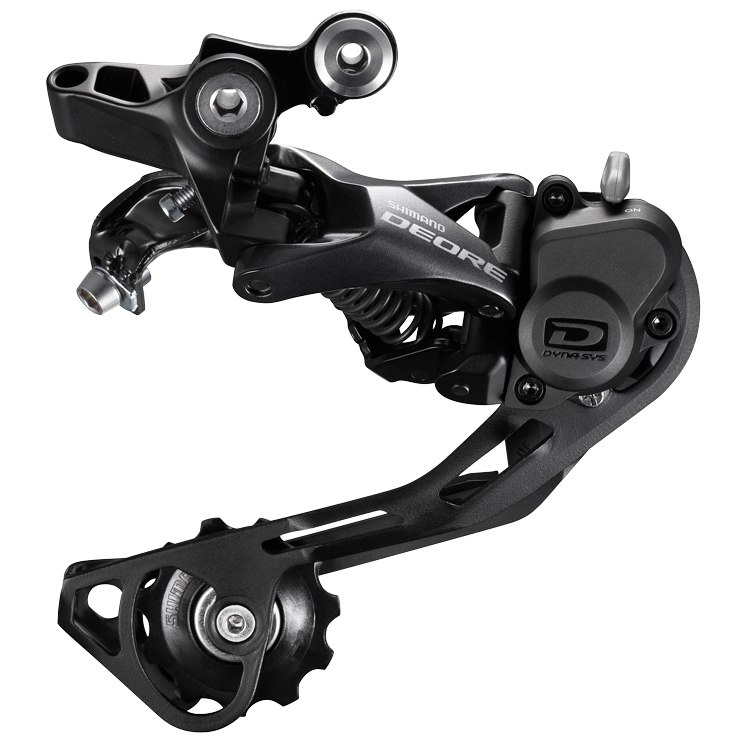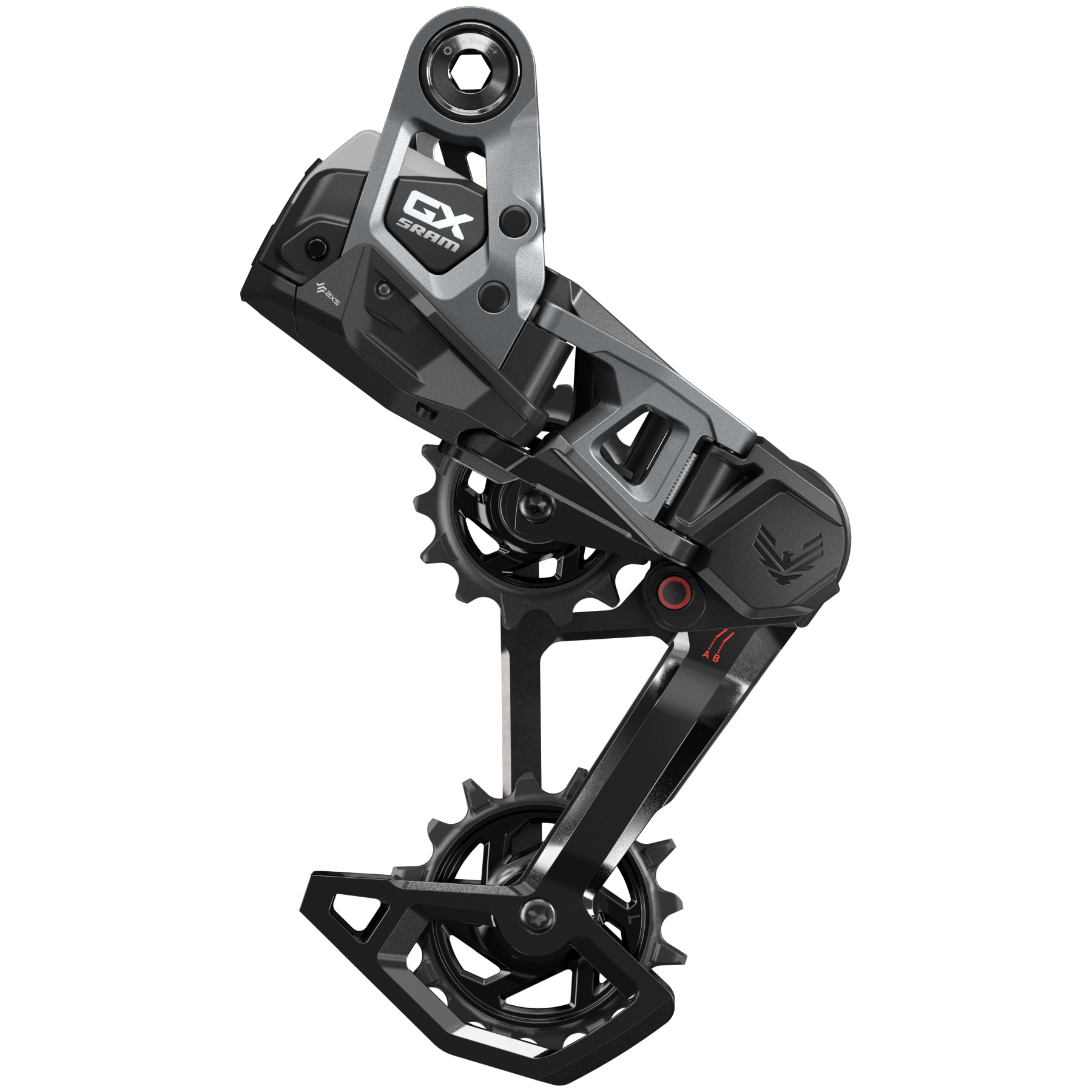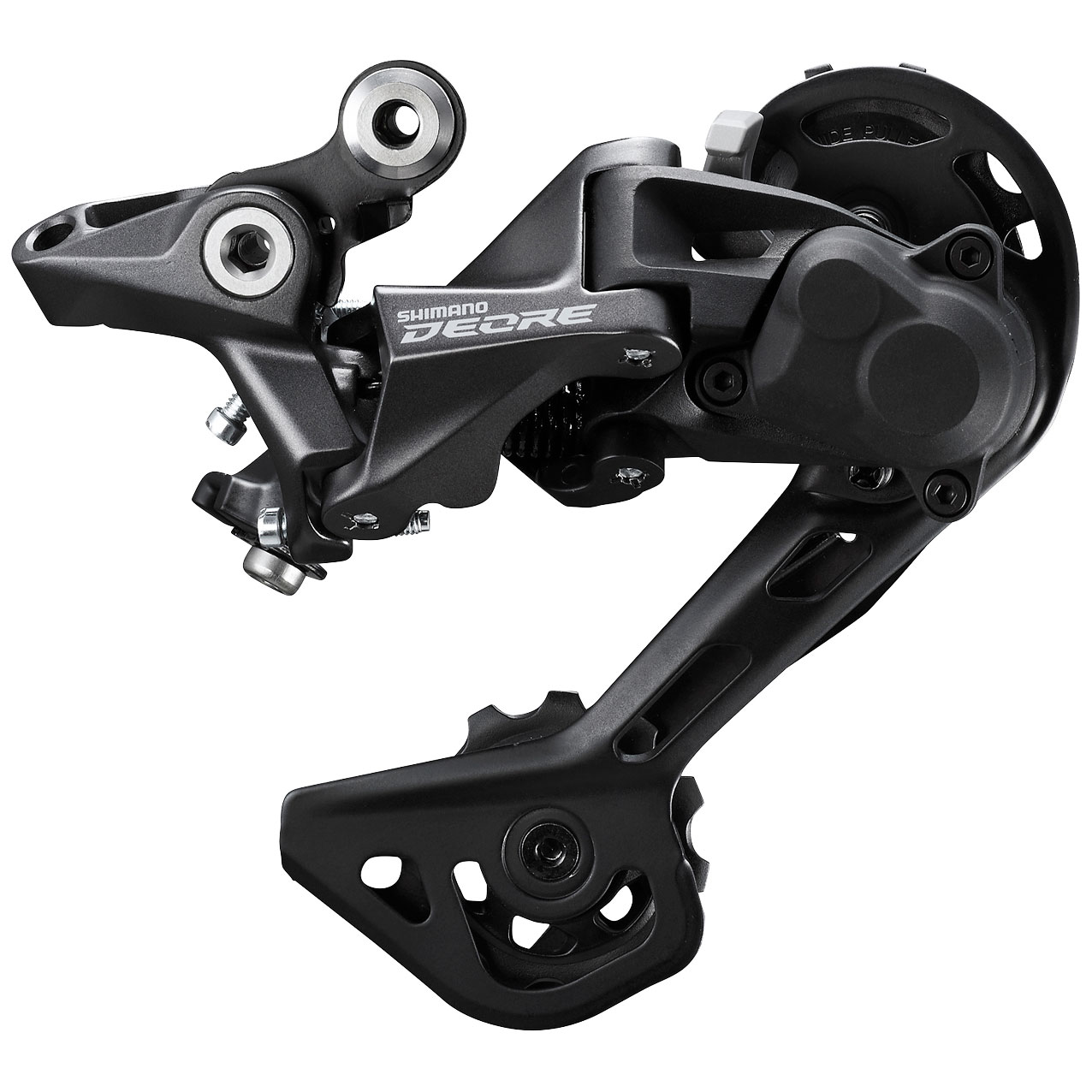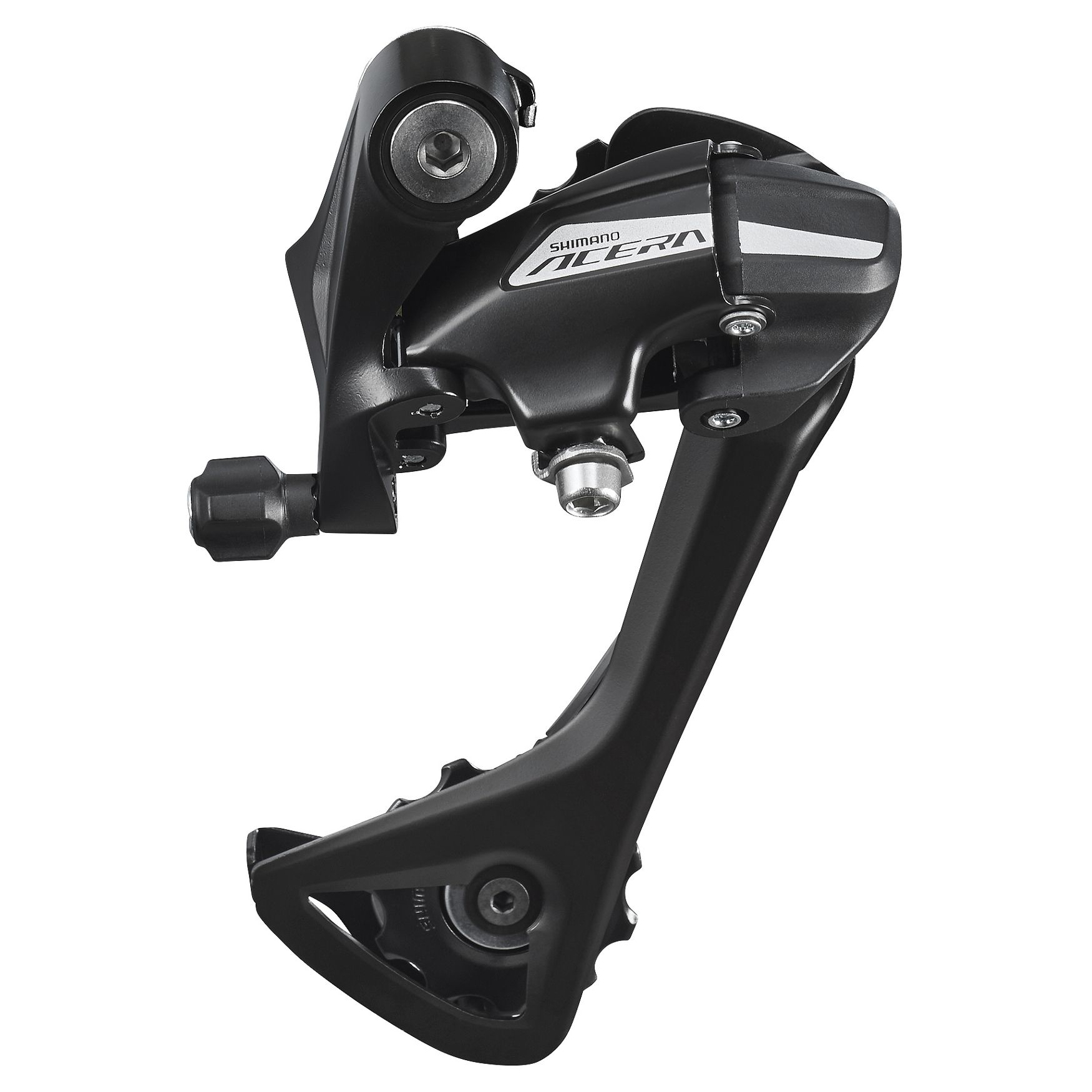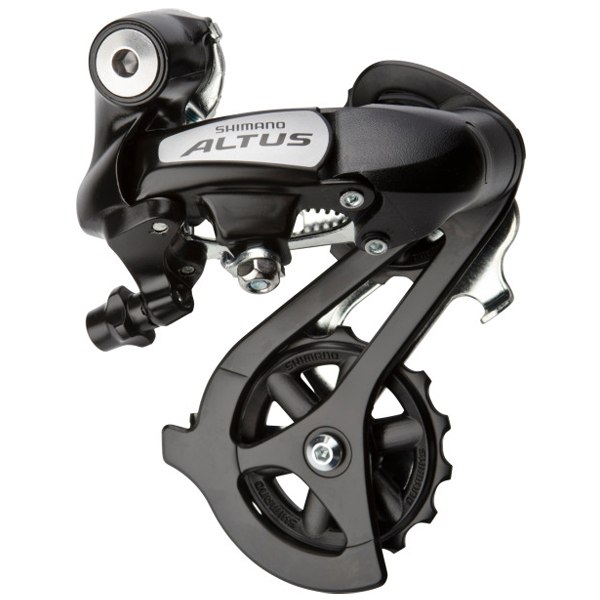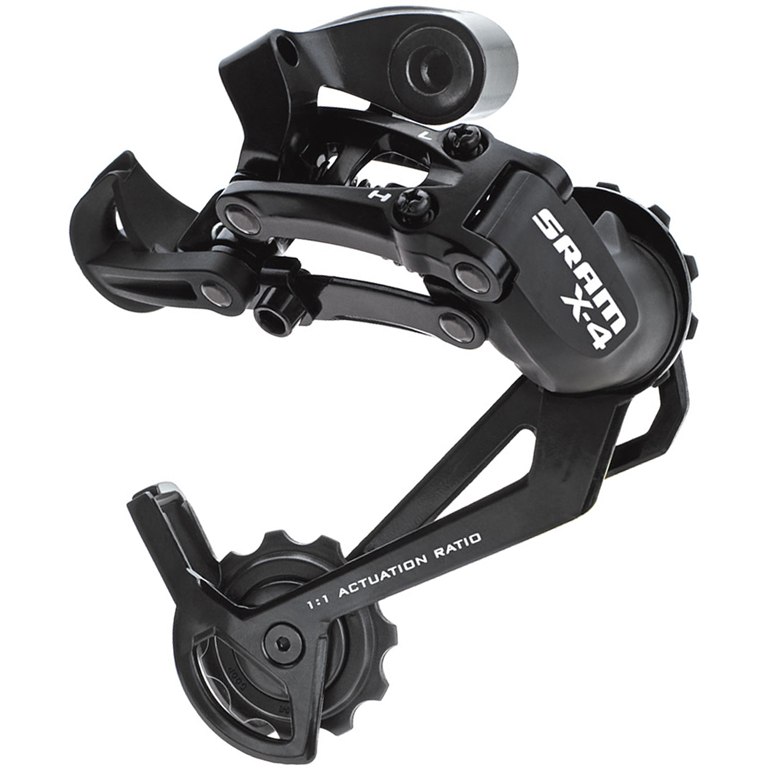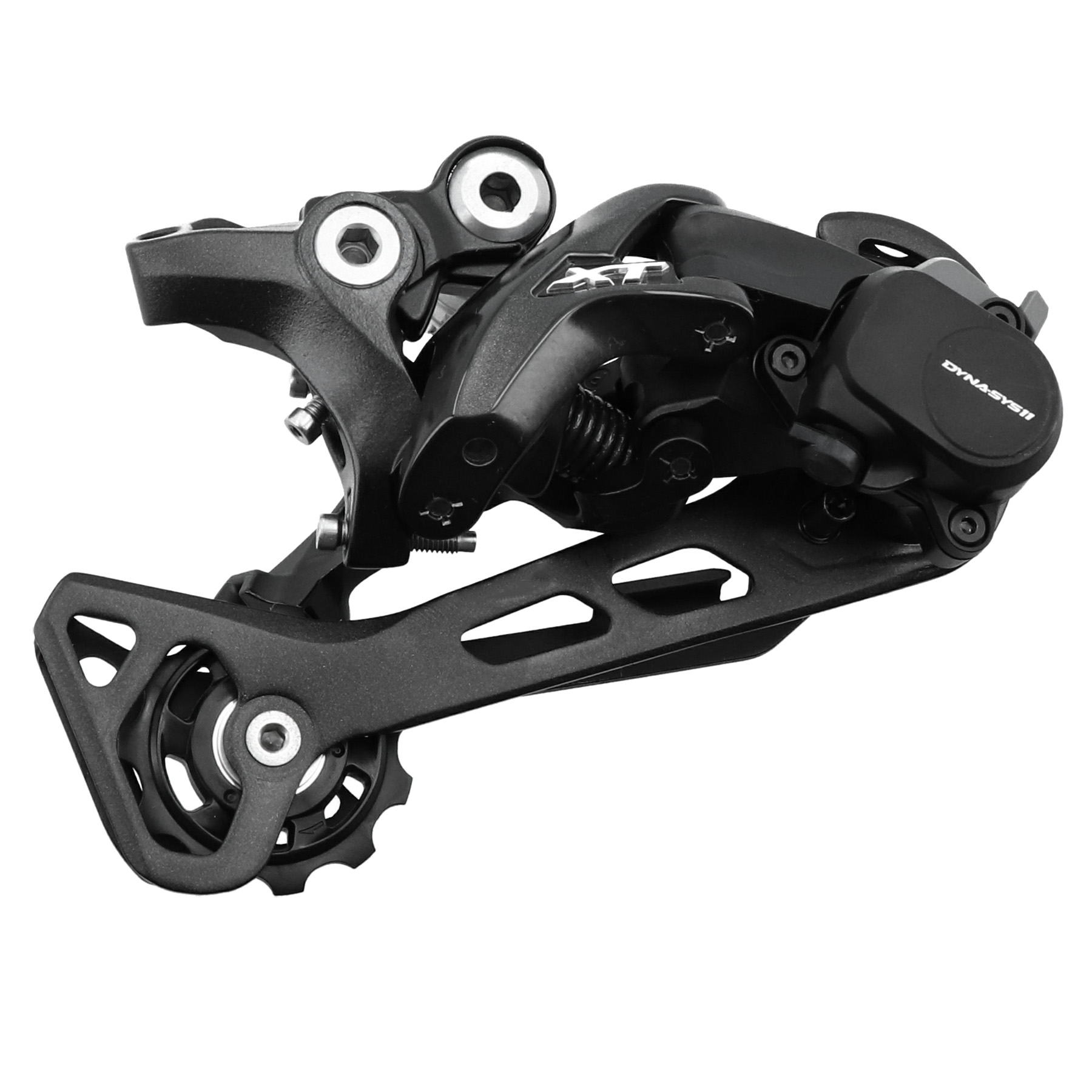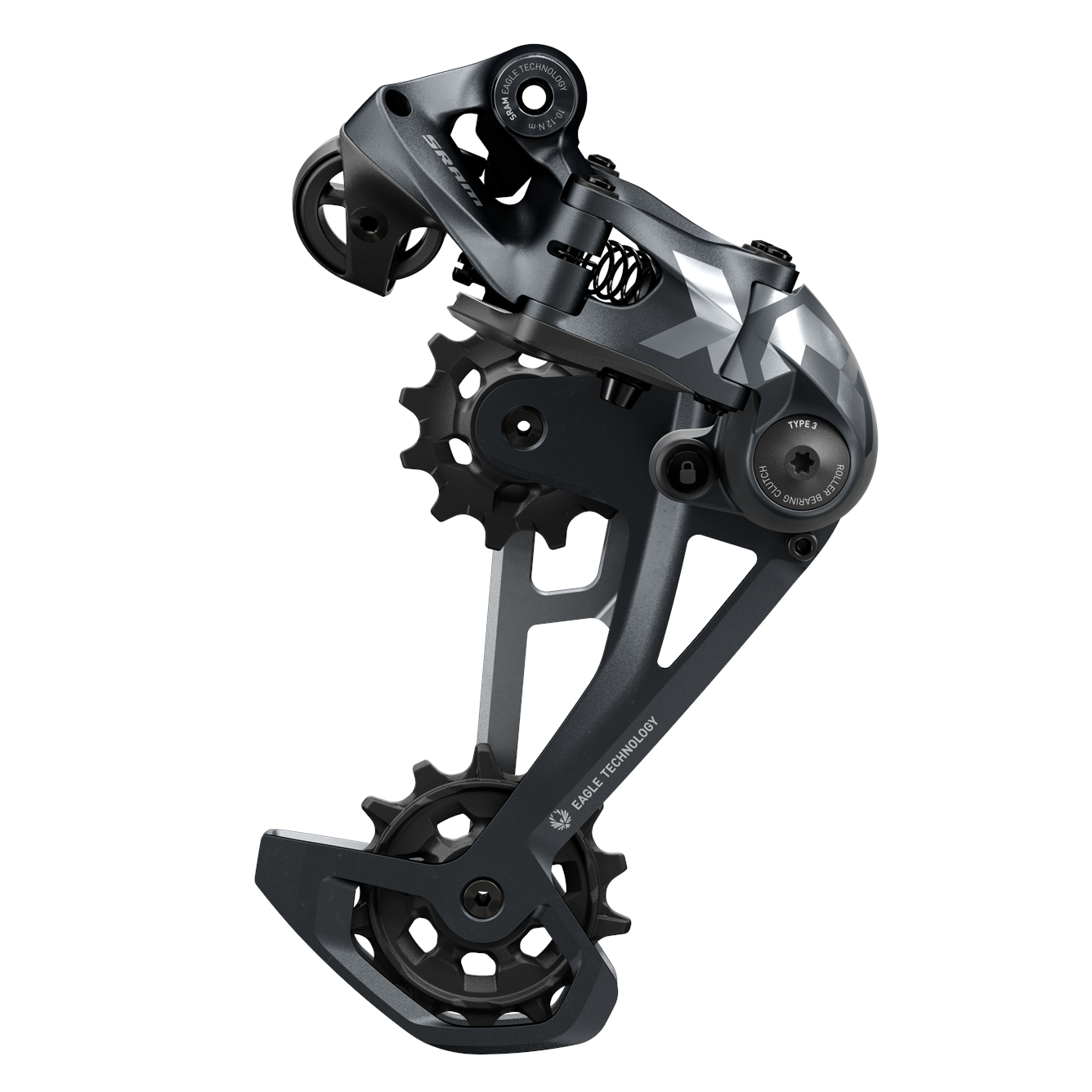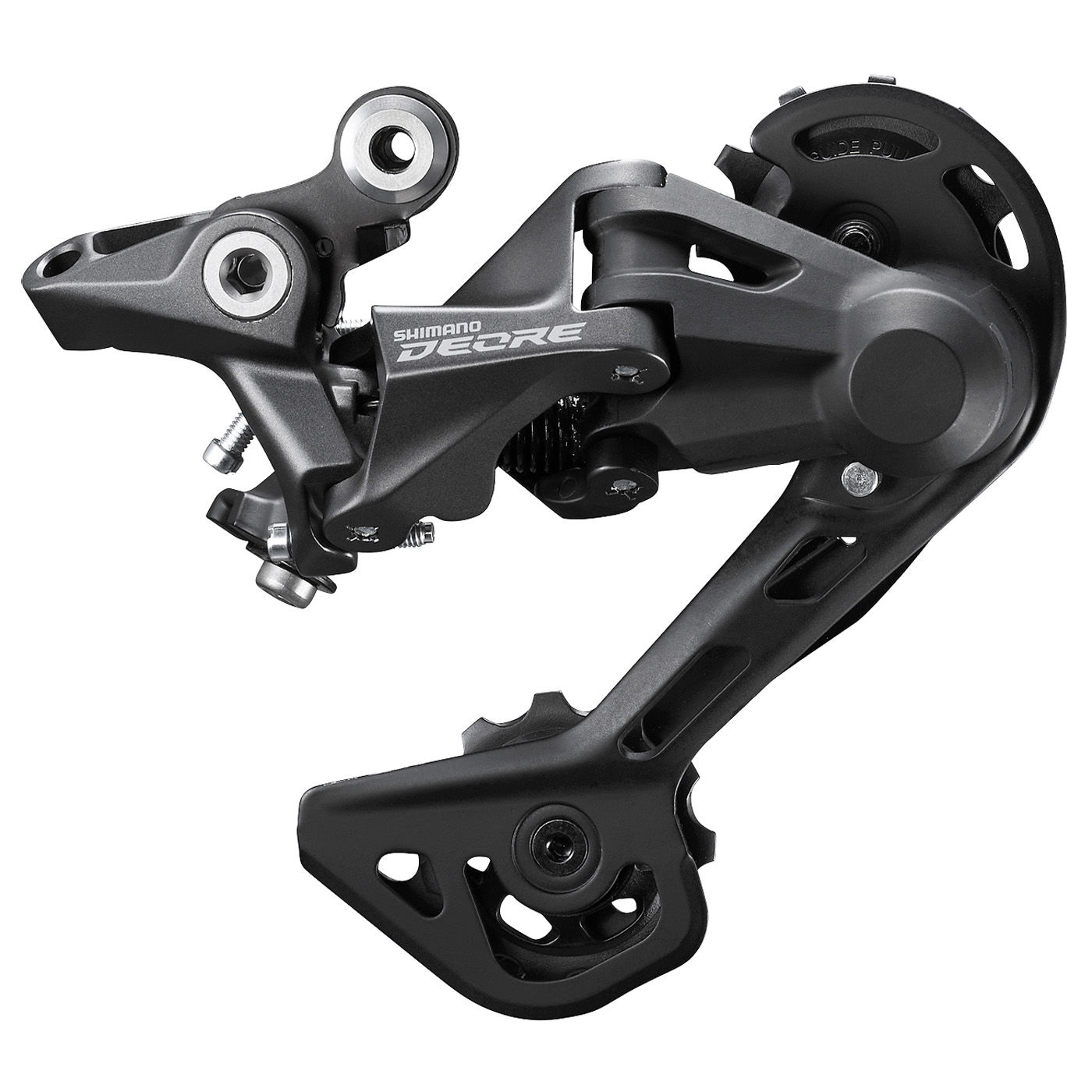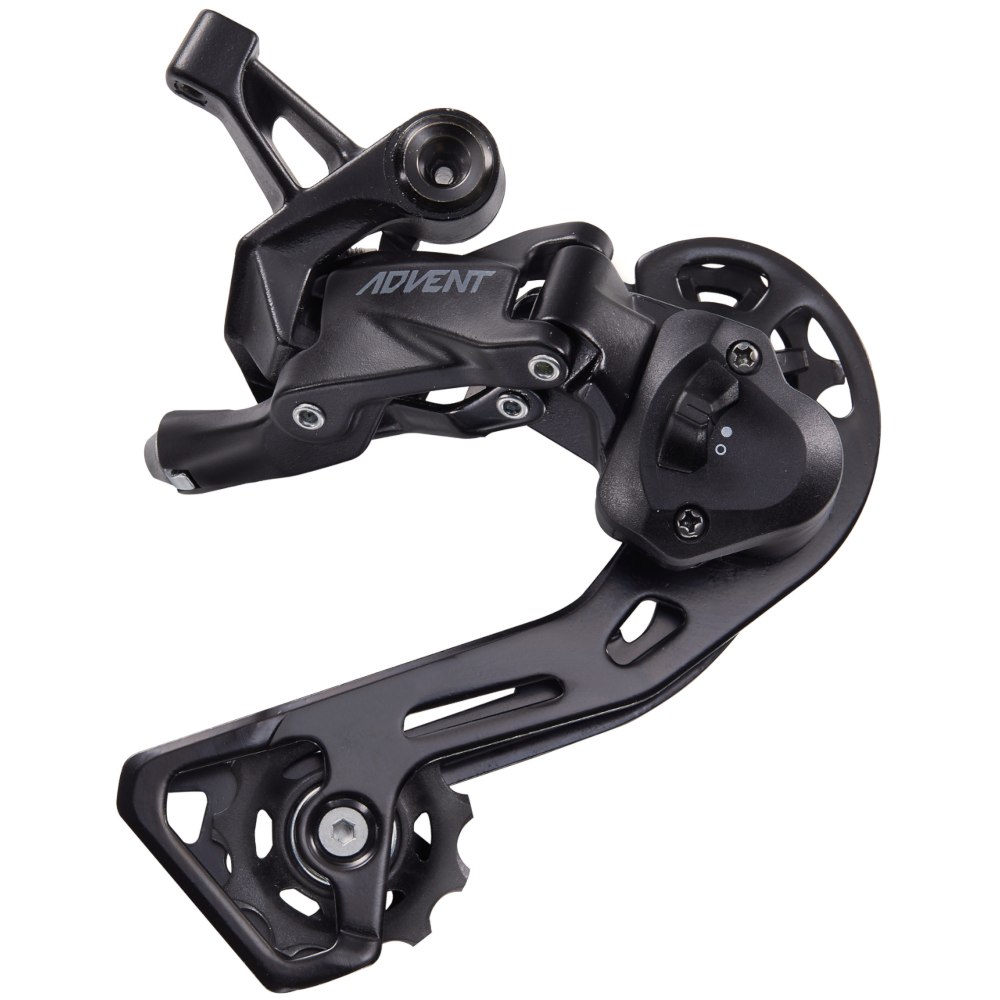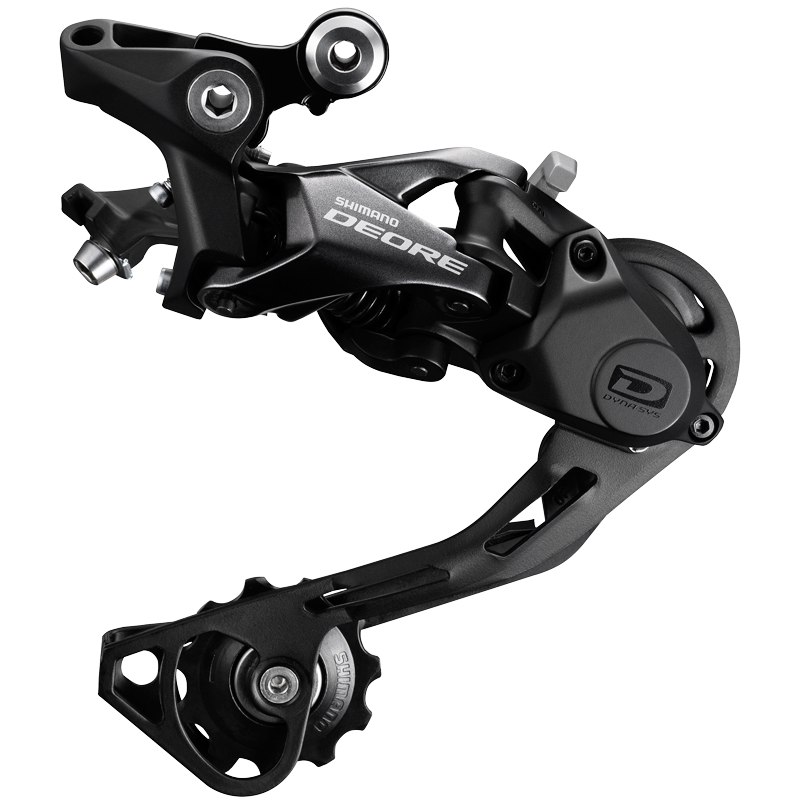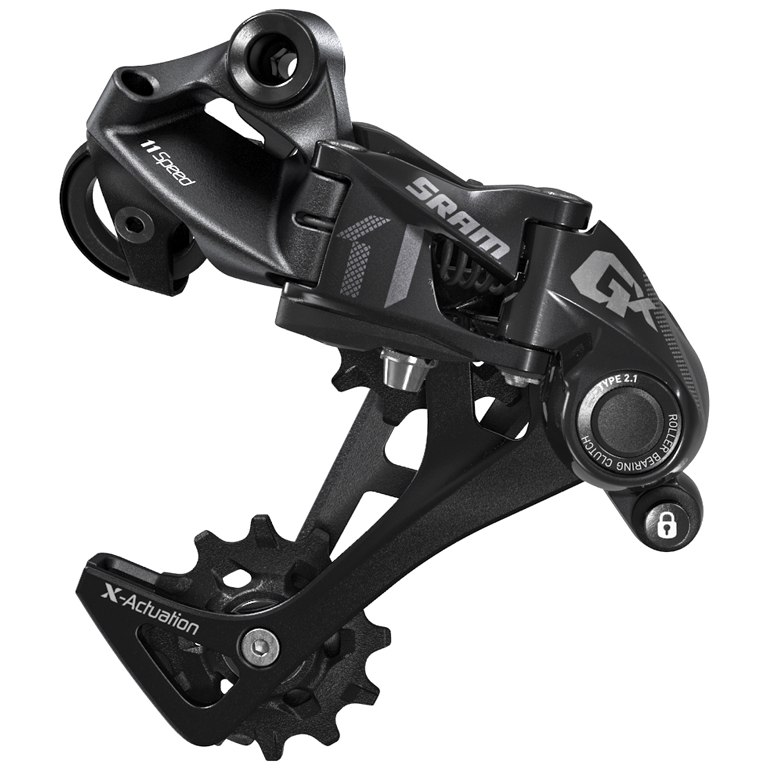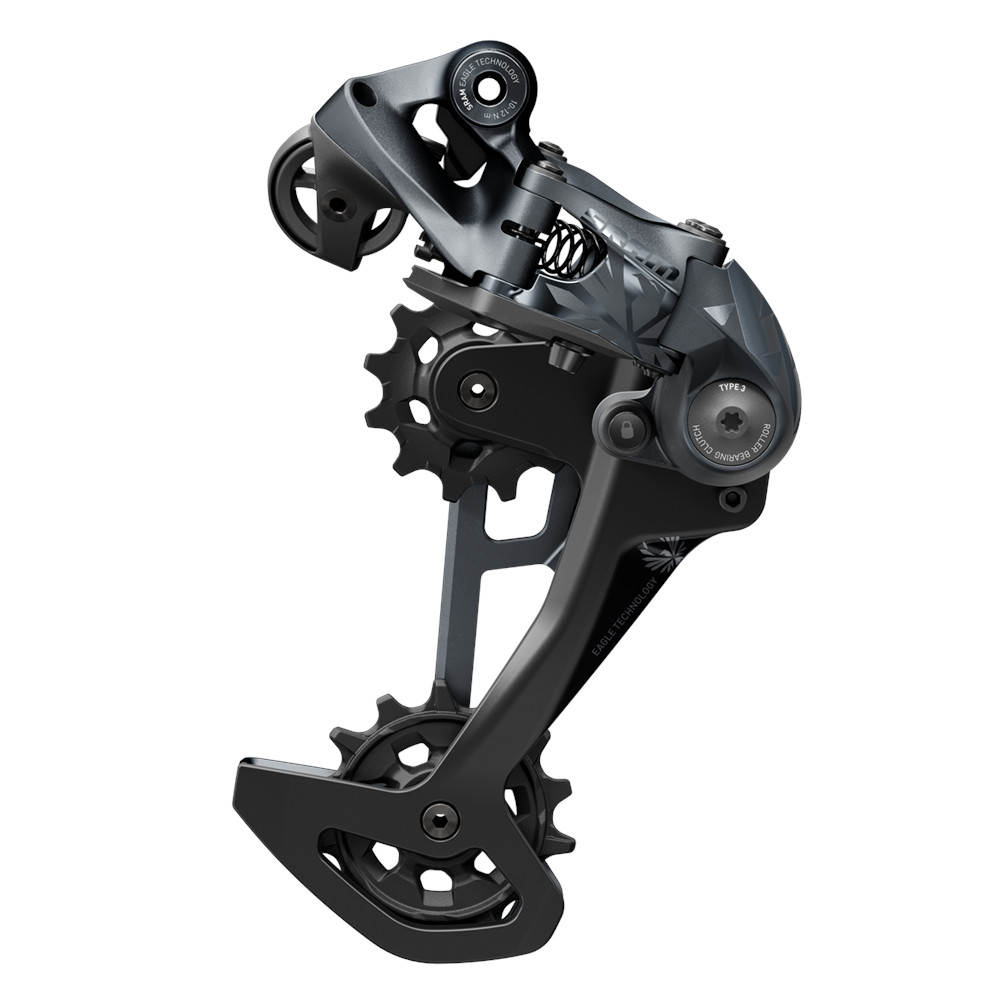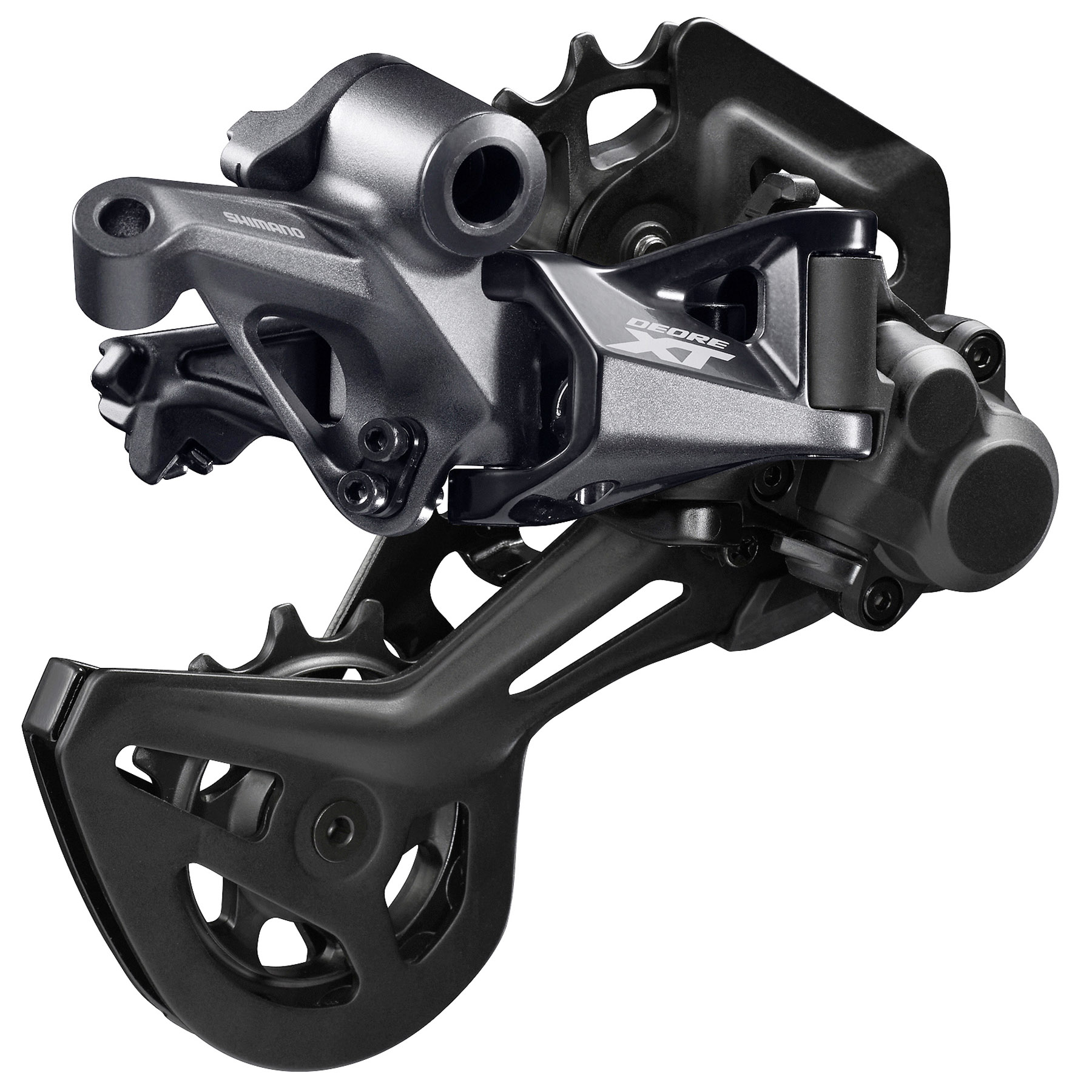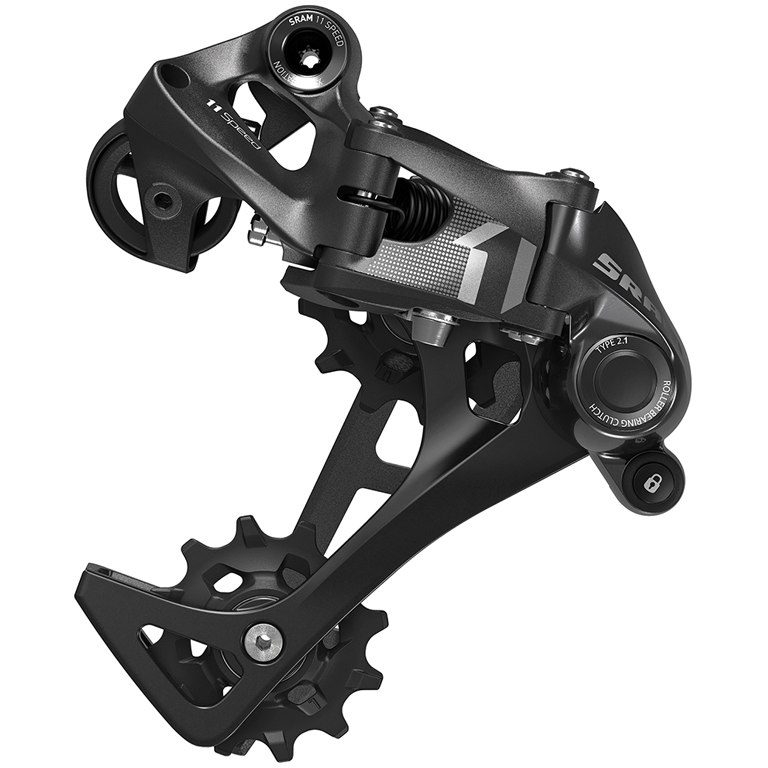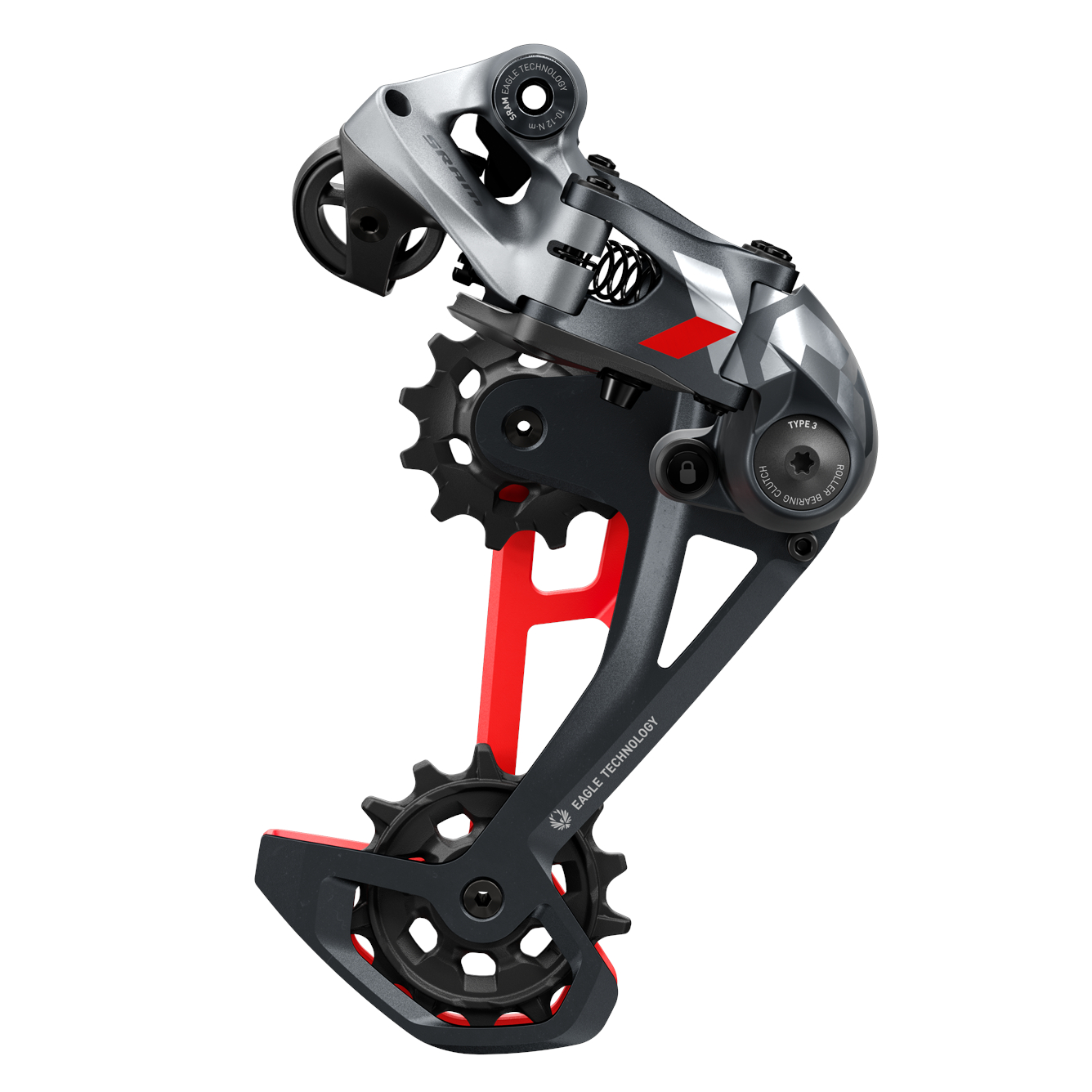- Home
- Cycling
- Parts
- Shifting Components
- Rear Derailleurs
- MTB Rear Derailleurs
MTB Rear Derailleur — The Heart of Mountain Bike Gear Shift
Precise gear shifts on a mountain bike are the task of the derailleur. However, there are a few things to take into account When off-road, the derailleur is subjected to particularly high loads, and must offer an especially wide range of gears. That’s why an MTB rear derailleur has some special functional features. On this page, we explain what types of MTB derailleurs are available. You’ll also find out everything else you need to know for purchasing and setting up derailleurs on your mountain bike. Read more
What Makes the Mountain Bike Derailleurs so Special?
Since its invention, the mountain bike has been one of the most important drivers of development. Why? Because the loads on parts when off-road, on trails or on downhills are great. And because functional needs on rough terrain are correspondingly high. And because with a mountain bike, shifting parts such as the rear derailleur require the highest precision, maximum speed when changing gear and the lowest possible weight. To reconcile these needs, companies have put a great deal of work into the development of MTB derailleurs over the years. But what are the special features of an MTB derailleur?
MTB derailleurs offer as many gears as possible, currently eleven or twelve gears are common in the top groups. In addition, MTB derailleurs cover a wide range of gears — mainly because mountain bikes usually only have one chain ring at the front. So MTB derailleurs must offer the entire range of gears at the back, on the derailleur and cassette. The cassettes on MTBs therefore have particularly small sprockets (for heavier gears and faster speeds downhill). At the other end, however, they have especially large sprockets with many teeth (for light pedalling and low speeds on mountains). An MTB derailleur must be able to accommodate this wide range of speeds and also the wide range of sprockets.
Another feature on the mountain bike is that the derailleur is subjected to particularly violent impact and knocks from the ground. In extreme cases this means that the chain can spring off the cassette. That’s why, some years ago, developers produced so-called “clutch” technology. A special spring mechanism pulls the MTB derailleur back up more strongly than derailleurs for other bicycles. The Japanese manufacturer, Shimano, for example, fits this hard spring to all its derailleurs with “Shadow Plus” technology. The American specialist Sram uses derailleurs with the suffix “Type 2” and “Type 3”.
As a further special feature, the developers have designed the MTB derailleurs in such a way that they do not move too far outwards when shifting outwards (to smaller sprockets), but remain as close as possible to the bike under the chainstay. This should protect the MTB derailleur more, if a stone or root touches it, from bending or even ripping it off. At Shimano this technology is called “Shadow”. At Sram it is called “X Horizon”.
What Types of MTB Derailleurs Are Out There?
Mechanical derailleur gears are still common on mountain bikes and e-mountain bikes, and only a few expensive top groupsets are optionally available with electronic gears. With mechanical MTB derailleurs, the gear shift is connected to the shifter with a Bowden cable. This is also called a gear cable. Nearly all current mountain bikes are only fitted with a derailleur at the rear. Modern mountain bikes do not usually have a front derailleur any more. Commands on the shifters make the gear cable shorter or longer by a defined distance per gear, so the derailleur moves accordingly and transfers the chain to larger or smaller sprockets. The shift lever governs how many gears and how quickly the gears are changed with every lever movement. The derailleur merely executes these commands.
Top gear manufacturers also offer electronic shifting. This involves electronic impulses being sent to the derailleur by wire or wirelessly. A small motor in the derailleur then moves it the appropriate way under the cassette. Electronic MTB derailleurs only work with the right electronic gear lever fitted.
Derailleurs on MTBs — Here Are The Types
- Mountain bike derailleur — there are these brands: Sram and Shimano dominate the MTB derailleur market these days. Some new brands have come onto the scene too and offer their own groupsets. As a rule of thumb, you have to have gear levers and derailleurs from the same manufacturer, otherwise the gearing system won’t work.
- Mountain bike derailleurs and the different number of gears: the rear derailleur is operated by the right gear lever. The gear lever and the derailleur must have the same number of gears. Top modern MTB groupsets will have eleven or twelve-speed derailleurs, whilst older or more affordable derailleurs will have fewer speeds. Simply count the number of sprockets on the cassette of your mountain bike. Then you’ll know for how many gears the derailleur must be designed for.
- Mechanical or electronic: mechanical shifting is the most popular and uses a Bowden cable fitted into the gear lever mechanism. For some years now, large gear suppliers have also stocked electronic gearing systems as part of their range, and they require the corresponding electronic shifters.
What Else Should I Look Out for When Shopping for MTB Derailleurs?
As we’ve already mentioned, gear levers and derailleurs should come from the same manufacturer. You should also make sure that the lever uses the right number of gears, electronic gearing systems obviously require electronic shifters. Large gear suppliers often stock a variety of groupsets, which begs the question: do my shifters and derailleur have to come from the same groupset? Derailleur manufacturers recommend that components from different derailleurs produced by one single manufacturer will actually work in combination – if they are set up for the same number of gears.
How Do Different MTB Rear Derailleurs Differ from Each Other?
You can use derailleurs and gear levers from different groupsets within a brand — if they have the same number of gears. The main differences between derailleur sets are the materials used and the material quality. The following applies: As a rule, the more expensive a derailleur, the higher the quality, durability and lightness of the component. But as we’ve already mentioned, the gear lever with its built-in shift mechanism is responsible for the precision and speed of gear changes, you can actually also use a cheaper model for the derailleur but not the gear lever. But of course the parts work best when they all come from one groupset.
How Do I Mount and Maintain A Mountain Bike Rear Derailleur?
Mounting and adjusting MTB derailleurs differs greatly depending on the manufacturer. Our tip: always follow the operator’s manual or tutorials. In everyday life, off the trail, i.e. when transporting and parking your bike, you should protect the derailleur from impact and knocks. When transporting your bike, nothing should put pressure on the derailleur, and when you lean your bike, the derailleur should not hit anything.
If the derailleur is very dirty, you should remove large clumps of dirt directly after your trip with a little water and a brush that is not to stiff. Pressure washers are absolutely taboo! That’s because, with the powerful water jet the derailleur can become misaligned, and the fine mechanism may even be damaged. Regularly spray a little fine or silicone oil on all links and on the bearings of the two pulleys as maintenance. At bike24 we offer you a range of different bicycle maintenance products, that you can use to maintain your derailleur.
MTB Derailleurs: A Summary
- Mountain bike derailleurs execute the commands from the gear lever.
- There are mountain bike derailleurs from different manufacturers (Shimano, Sram and others) in different versions (electronic and mechanical) and with different numbers of gears (these days generally eleven or twelve).
- MTB gear levers should always come from the same manufacturer as the derailleur.
- The derailleur and the gear lever must be designed for the same number of gears.
- The gear lever and derailleur do not necessarily have to come from the same groupset, but gear manufacturers do recommend this.
